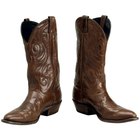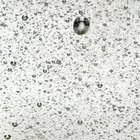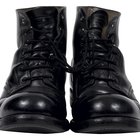
With proper care, leather coats can easily last for decades. Although leather has its own oils, these resources are finite and need replenishing from time to time. Leaving leather to dry out causes it to become brittle and crack – a problem that can’t be easily remedied. Maintaining the slight sheen on a leather coat requires gentle cleaning and consistent oiling.
Types
Simple olive or linseed oil will suffice for cleaning leather coats, though HowToCleanThings.org relates an old cowboy solution that mixes one part white vinegar with two parts plain olive oil. neatsfoot oil – made from the shin bones and feet of cattle – can also be used. A number of manufacturers such as Carr & Day & Martin, Effax and Fiebing produce oils designed for cleaning leather. These generally contain olive oil, Neatsfoot oil or linseed oil.
Preparation
Before applying any oil, the jacket must be clean. Dampen a cloth and apply a little mild detergent, such as hand soap. Lightly clean the jacket, being careful to avoid soaking any part of it in water. Dampen another cloth and use it to remove any soap left on the jacket. Again, avoid soaking the jacket with water. Use a dry towel to remove any water left on the surface. Leave the jacket to dry for at least five minutes before working in the oil.
Testing
Leather jackets are expensive and hold the pride of place in many a wardrobe. For this reason it’s worth being cautious when first oiling a jacket, or when trying a new product. Check that the effect of the oil is aesthetically pleasing by testing it on a small hidden part of the jacket. Pay attention to whether the oil has a lightning or darkening effect.
Application
Apply a minimal amount of oil to a clean, dry cloth. It's best to apply too little rather than too much – excess oil can cause leather to darken and will leave a sticky residue. Gently rub the oil into the leather using a circular motion. When the oil has been absorbed, the leather will become soft and supple. Remove excess oil using a dry chamois cloth.
Related Articles

How to Treat Leather Boots With ...

How Should I Protect My Lambskin ...

How to Make Your Own Leather Jacket ...

How to Lift Oil Stains From Timberland ...

How to Apply DuckBack Oil on Duster ...

Lavender Oil & Acne

How to Make Oilskin Wax

How to Clean the Leather on a High ...

How to Use Mink Oil on Boot Leather

How to Use Emu Oil on Hair

How to Care for Your Blundstones

How to Repair a Wet Leather Jacket

How to Clean a Chamois Leather Jacket ...

Can You Reuse Fish Frying Oil for Other ...

How to Clean Suede Shoes With Oil

Remedy for Scratches in Leather

How to Protect a Leather Jacket From ...

How to Treat Doc Martens With Mink Oil

How to Wash Collar Stains on a Leather ...

The Best Oils for Oil-Rubbed Leather ...
References
Writer Bio
Justin Schamotta began writing in 2003. His articles have appeared in "New Internationalist," "Bizarre," "Windsurf Magazine," "Cadogan Travel Guides" and "Juno." He was a deputy editor at Corporate Watch and co-editor of "BULB" magazine. Schamotta has a Bachelor of Science in psychology from Plymouth University and a postgraduate diploma in journalism from Cardiff University.
Photo Credits
Comstock/Comstock/Getty Images